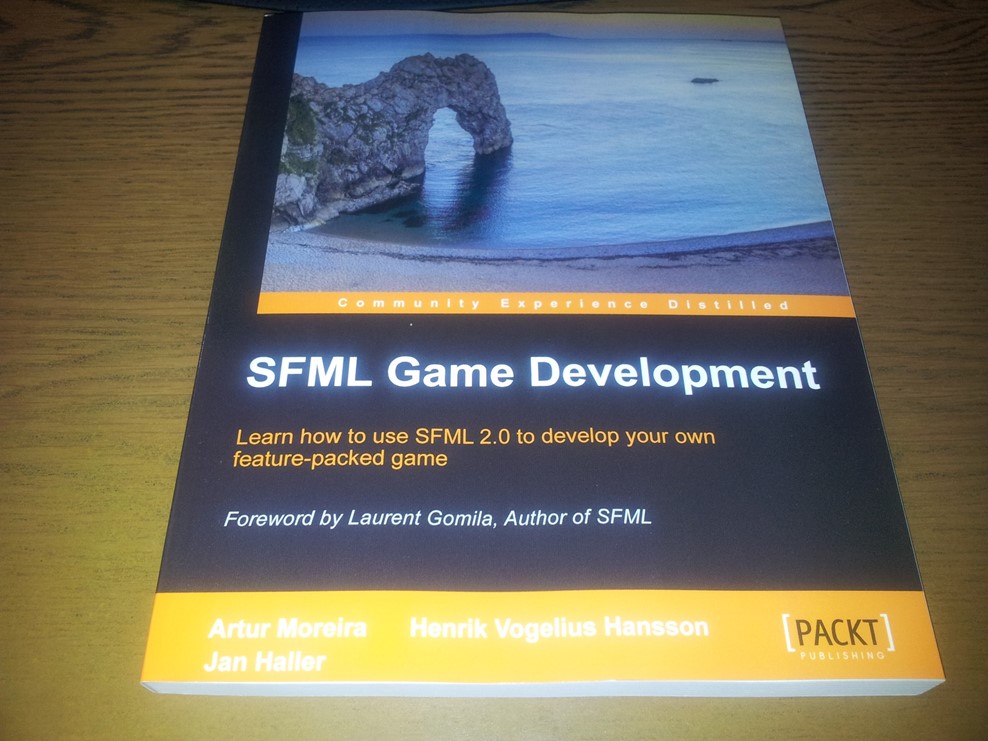I should’ve posted about this long time ago, but better late than never.
A few month ago the publisher Packt Publishing contacted Laurent, the creator of SFML, and at the same time Groogy, a relatively active member of the community who also wrote the SFML Ruby binding. Packt seems to have noticed the potential of SFML and the lack of books and thus wanted to get a book out. Since Laurent is a very busy man, he asked the community if someone wanted to write a book. After a bit brainstorming and people checking their schedule a small team was formed and the work began.
Now after eight month the book, written by the SFML community members Nexus, Grimshaw and Groogy and supported by Laurent himself, has been finally released and is for sale on Packt’s website with a few different options. Grimshaw has also created a forum thread, so feel free to leave some nice comments regarding the book there. I’ve bought the book myself, but haven’t been able to completely read through it. Once I’ve finished it completely, I’ll certainly be writing a review.

There have been some negative comments on the forum and also in IRC, thus I want to quickly clarify a few things. This book was written by a team, that means you’ll be able to find different wirting styles and things might seem a bit inconsitant from time to time. The authors of the book are all three non-native English speakers, so you should not be expecting a high-toned English, but instead prepare yourself for some grammar mistakes. As the title of the book suggests, the book is about SFML and Game Development, thus the focus is not on pure Game Development nor SFML. If you expect to learn every bit and pieces of how SFML works etc., then you should rather read the documentation and the source code. If however you think you’ll be able to develop you’re dream 3D RPGMMO which is of course better than WoW and alike, then you’re clearly in the wrong, because the book only gives an introduction to game development in the 2D space with focus on highlighting parts of SFML. At the end of the book, you’ll have a game to play with, but since a lot of the stuff was handed to you, it may seem easier that it actually is developing a game from scratch. And one last comment regarding the publisher, although given that Packt gave a few members the opportunity to write a book about SFML, they seem to be lacking a bit on their editorial part. From a good publisher you’d expect them to proofread the book in details and be able to fix many of the English grammar issues, which they apparently Packt hasn’t spent too much time on.
Overall this book was never meant as the perfect book about SFML, but rather as just another book on game development and yet the first one using SFML. With that in mind you should get disappointed if your mind isn’t completely blown and you find some mistakes, but instead you should be happy that SFML has finally gotten an official book!